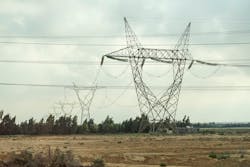Are Today’s Energy Policies Hurting Bulk Power System Reliability?
We are in the danger zone according to NERC’s 2022 Summer Reliability Assessment (SRA). The report reveals a sobering number of issues that may lead to energy shortfalls in roughly 50% of the North American bulk power system (BPS) regions during the June through September period. Some contributing factors are uncontrollable, such as heat and drought conditions caused by infrequent, but predictable weather cycles. Other factors are entirely our doing such as the retirement of operationally significant amounts of fossil fuel generation and increased dependence on intermittent renewable power. Does this SRA reveal peak electricity demand, supply changes or other challenges that might infer broader impacts or risks to the BPS?
Several regions currently face a capacity shortfall or narrow margins with elevated risk. For example, load serving entities in four Midcontinent ISO (MISO) zones entered the 2022 planning resource auction with insufficient capacity to cover their requirements. MISO peak demand projections have increased since last summer due to a return to more normal demand patterns, which is also happening elsewhere, but MISO also saw a 3,200-MW drop in capacity due to retirements. Shortfalls mean stop-gap load reductions or non-firm imports may be needed to meet reserve requirements under normal peak summer conditions.
The SRA indicates drought conditions affecting or threatening wide areas of North America may result in capacity shortfalls in WECC and SPP due to reduced hydro and thermal once-through cooling power capacity. Extreme heat exacerbated by drought also is a threat for ERCOT, even though recent capacity additions of primarily solar and wind have raised reserves sufficiently to cover normal peak demand. Dependence on variable energy has increased the importance of interregional transfers in several areas, and a broad-scale heat wave event could cause energy emergencies due to a reduced supply of electricity available for transfer.
A sizable portion of the risk to our BPS currently is related to weather cycles, but not all of it. We are also facing supply chain vulnerabilities and commissioning challenges for new generation and transmission projects in areas where completion is needed for reliability during summer peak periods. Some of those challenges are a result of weaknesses created by the Covid pandemic, including shortages in some materials and labor. The U.S. also is seeing a period of elevated cyber security threats resulting from heightened geopolitical tensions across the world. Finally, partially weather related and partly due to land management practices, NERC expects an active summer wildfire season in the Western U.S. and Canada, which also threatens BPS reliability.
Generation and transmission owners, balancing authorities, and reliability coordinators get a lesson on dealing with the unexpected each year. Yet, it is reasonable to ask if we are improving as a result and if all the issues are really “unexpected.” Thankfully, about half of the NERC regions are well prepared for this summer. However, NERC consumed notable space in the SRA talking about the “unexpected” tripping of BPS-connected solar PV generation units that was identified as a BPS risk in 2016. The problem has been described as the lack of inverter-based resource (IBR) ride-through capability that can cause a localized disturbance to become a major system disturbance.
NERC is recommending improvements to its reliability standards to address systemic issues with IBRs. The recommendations include adding: 1) a performance-based requirement to replace the current PRC-024-3 provision with a comprehensive ride-through standard that focuses on generator protections and controls; 2) a validation requirement to ensure standards compliance; and improved modeling to assure system managers are accurately predicting potential BPS performance when system additions/changes are made.
The entire industry should be focused on addressing systemic reliability issues as we continue making long-term infrastructure modifications. Is it possible that fossil and nuclear baseload capacity retirements, overreliance on renewable resources, and dependence on electrification to transform growing portions of the economy will eliminate valuable diversification in our BPS and make us overly dependent on electricity? Such words may sound like sacrilege to some, but pervasive hard-line policies like ESG goals are threatening the energy supply balance our country once enjoyed.
Good planners expect the unexpected. It is comforting to know that experts across the country are helping the U.S. prepare for cyberattacks and incorporating lessons learned about maintaining electric system performance and supply chains during a pandemic. Further, it’s encouraging to see NERC’s call to address known IBR issues. Exercises like the SRA also highlight trends such as growing regional dependence on intermittent resources. This year’s report illustrates how such resources can suffer concurrent reduced availability to create the proverbial perfect storm due to weather cycles we know can be “expected” at some point. Hopefully, this report provides the clarion call that stimulates renewed interest in maintaining diversification in our energy supply.
About the Author
David Shadle
Grid Optimization Editor
Dave joined the T&D World team as the editor of the Grid Optimization Center of Excellence website in January 2016.
Dave is a power industry veteran with a history of leading environmental and development organizations, championing crucial projects, managing major acquisitions and implementing change. Dave is currently a principal at Power Advance, LLC, an independent consulting firm specializing in power project development, research and analysis, due diligence and valuation support. Dave is also a contributing consultant for Transmission & Distribution World. Prior to Power Advance, Dave held business and power project development positions with The Louis Berger Group, Iberdrola Renewables, FPL Energy and General Public Utilities. He is a graduate of Pennsylvania State University, the New Jersey Institute of Technology and Purdue University.
